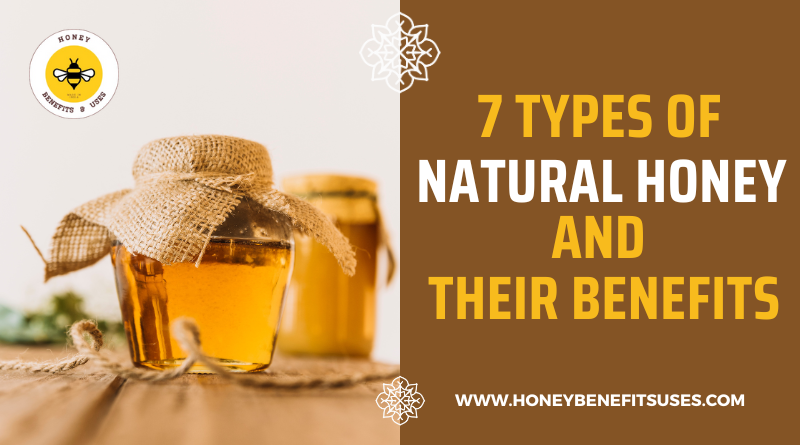
Natural honey does not contain additives like colorants or artificial flavorants usually found in the honey commonly found on the shelves of grocery stores. The latter usually contains various substances like corn syrup, for example, to keep down costs.
People have used natural honey as a medicine for centuries. Research shows that it has antifungal, antibacterial, and antioxidant properties. Furthermore, it may help deal with a wide range of health issues. These include, amongst others, digestion and gut health issues, wound healing, addressing sore throats, and boosting immune system function. It may also improve brain health, according to many sources.
Different Types of Natural Honey
You find many types of honey. Their names may refer to the plants from which bees produce honey or the areas where the specific honey comes from.
The light, delicate flavor of litchi honey reminds a person of the smell of roses. This type of honey comes from beehives placed near litchi orchards. Litchi honey is a natural honey without any preservatives. Quite rare, litchi honey comes from diverse parts of the world like Bihar, a remote part of India, and Madagascar. A great source of protein and fiber, this natural honey may help promote blood circulation, cognitive conditions, and digestive disorders.
Bees that produce Sidr honey have hives near Sidr trees. We find these trees predominantly in the Middle Eastern country of Yemen. This type of honey is exceedingly rare and thus very expensive. It is also known for its extraordinarily high antioxidant count and ability to boost your immune system. Furthermore, unlike most kinds of honey, Sidr honey has a neutral Ph balance and easily dissolves into your bloodstream once consumed. Furthermore, Sidr honey’s high mineral content makes it useful for pregnant women because it may help address mineral deficiencies commonly experienced during pregnancy. The honey may also help improve digestion, lower your cholesterol count, and help with weight loss. This natural honey has a rich, buttery, sweet taste, and a burnt orange color.
As the name suggests, Kashmiri acacia honey comes from the flowers of the acacia tree in Kashmir, a geographical area found in the northernmost region of the Indian subcontinent. India, China, and Pakistan control the area. The antioxidant and antibacterial properties of Kashmiri acacia honey may prevent bacterial infections and speed up wound healing when applied topically. Boasting a mild, sweet flavor, this type of honey is often used to sweeten beverages because it does not influence the taste.
Wild honey is a honey derived from flowers growing in the wild. In most cases, the bees also live in the wild and not in bee boxes managed by beekeepers. The color of this honey varies from exceptionally light to very dark. It also tends to have a slightly sour taste. The antibacterial properties of wild honey make it excellent for healing and may help heal most types of wounds, including bed sores. It may also help deal with the issues relating to sunburns. Literature suggests that using this natural honey may reduce your risk of scar formation.
Jamun honey comes from the Jamun flower’s nectar. It has a unique taste that combines sourness, bitterness, and sweetness. The flower grows in the tropical and subtropical areas of India, making India one of the largest producers of this type of honey. This natural honey may help with weight loss, anemia, respiratory issues, heart health, infections, and diabetes management. It may also improve oral hygiene and improve libido!
Multi honey is derived from a wide variety of flowers. This is where this type of honey gets its name from: ‘multi’ means ‘many’. These flowers include those from herbs and even medicinal plants. As a result, this natural honey is high in pollen, flavonoids, probiotic enzymes that promote gut health, antioxidants, and nutrients like vitamins B and C. We find this type of honey across the globe. This type of honey may help with diabetes control, lowering cholesterol and blood pressure levels, promoting better sleep, and helping address respiratory issues. Multi honey has a rich, flowery taste and may vary in color.
In Closing
Honey has, since ancient times, been used in cooking, as a sweetener, and as a medicine by many cultures across the globe. Modern scientific analysis has proven that the ancients were right – honey has many beneficial qualities that may help improve your health and well-being. Furthermore, these beneficial qualities may vary from one type of honey to the next, just like their color and taste. It would mainly depend on the type of nectar used to make the honey. Yet one thing stands out: honey has amazing antioxidant, anti-bacterial, and antifungal properties and contains a wealth of beneficial compounds.
